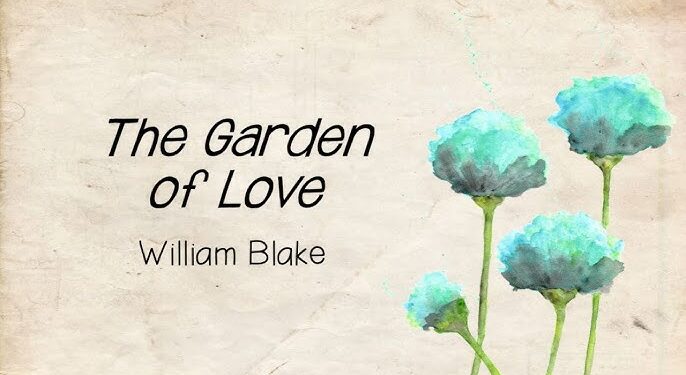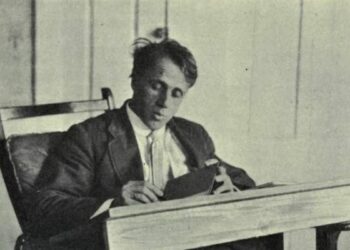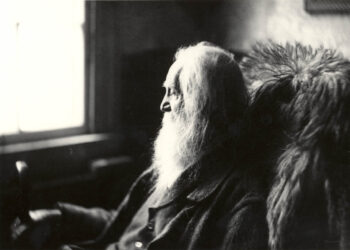Introduction
The Garden Of Love By William Blake Summary William Blake, a pivotal figure in English literature and a visionary poet, is renowned for his profound exploration of human emotions and societal critiques. One of his most evocative poems, “The Garden of Love,” featured in his collection Songs of Experience (1794), presents a powerful commentary on the themes of love, innocence, and the constraints imposed by organized religion. This article provides a stanza-wise summary and analysis of “The Garden of Love,” alongside an exploration of its themes, symbols, and significance in Blake’s body of work.The Garden Of Love By William Blake Summary
Stanza-wise Summary and Analysis
Title: “The Garden of Love”
The title itself evokes a sense of nostalgia and beauty, hinting at a place traditionally associated with love, fertility, and joy. However, Blake’s exploration of this garden reveals a darker, more complex reality.
Read More
Stanza 1: The Initial Vision of the Garden
Lines 1-2: “I went to the Garden of Love, / And saw what I never had seen;”
The poem opens with a speaker who visits the “Garden of Love.” This visit represents a journey into a space typically associated with joy and fulfillment. The phrase “what I never had seen” suggests a revelation or unexpected discovery, hinting at an unsettling realization.The Garden Of Love By William Blake Summary

Lines 3-4: “A Chapel was built in the midst, / Where I used to play on the green.”
The introduction of a chapel in the garden signifies the intrusion of organized religion into a once-sacred space of innocence and natural love. The speaker reflects on childhood memories of playing freely in the garden, evoking a sense of lost innocence. The juxtaposition of the chapel and the garden illustrates the conflict between spiritual authority and personal experience.
Stanza 2: The Loss of Innocence
Lines 5-6: “And I saw it was filled with graves, / And tombstones where flowers should be.”
The imagery of graves and tombstones starkly contrasts with the earlier portrayal of the garden as a place of life and vitality. This haunting image signifies the loss of innocence and the oppressive nature of societal and religious expectations. The expectation of flowers, typically symbols of love and beauty, is replaced by death, suggesting that the purity of love has been corrupted.The Garden Of Love By William Blake Summary
Lines 7-8: “And priests in black gowns were walking their rounds, / And binding with briars my joys and desires.”
The priests’ presence symbolizes the restrictive nature of organized religion, which stifles personal joy and natural desires. The phrase “binding with briars” evokes imagery of thorns and pain, suggesting that religious authority has transformed the garden of love into a place of suffering and repression. The speaker’s joys and desires, once free to flourish, are now constrained by dogma and societal norms.
Stanza 3: The Confrontation of Authority
Lines 9-10: “And so I turned to the Garden of Love, / That so many sweet flowers bore,”
In this stanza, the speaker’s yearning for the original beauty of the garden is palpable. The repetition of “Garden of Love” emphasizes the longing for a return to innocence and the natural expressions of love. The mention of “sweet flowers” conjures images of beauty and joy that the garden once represented.The Garden Of Love By William Blake Summary
Lines 11-12: “And I saw it was filled with graves, / And tombstones where flowers should be.”
The repetition of this imagery reinforces the theme of loss. The once vibrant garden is now a place of sorrow, encapsulating the idea that love, when constrained by societal norms and religious authority, leads to despair rather than joy.The Garden Of Love By William Blake Summary
Read More
Stanza 4: The Final Realization
Lines 13-14: “And priests in black gowns were walking their rounds, / And binding with briars my joys and desires.”
The final lines echo the earlier depiction of the priests, underscoring the inescapable nature of their authority. The cycle of oppression continues, emphasizing the relentless power of religious and societal constraints over personal expression. The repetition of the phrases throughout the poem creates a sense of inevitability and entrapment.
Lines 15-16: “And I thought of the flowers that should be there, / And I longed for the garden that was never there.”
In the closing lines, the speaker reflects on the idealized vision of the garden and the flowers that symbolize love and happiness. The longing for a garden “that was never there” suggests a deep sense of loss and disillusionment. The speaker’s realization reveals that the beauty and innocence associated with love have been overshadowed by the oppressive forces of society and religion.
Themes in “The Garden of Love”
1. The Conflict Between Innocence and Experience
At the heart of “The Garden of Love” is the tension between innocence and experience. The garden initially represents a space of natural love and joy, yet the introduction of religious authority transforms it into a place of repression and sorrow. Blake contrasts the untainted joy of childhood with the harsh realities imposed by society, reflecting the broader Romantic theme of the loss of innocence.The Garden Of Love By William Blake Summary
2. The Critique of Organized Religion
Blake’s poem serves as a critique of organized religion, particularly its ability to stifle individual desires and expressions of love. The priests symbolize the oppressive nature of religious authority, which binds joy and desire with “briars.” This critique reflects Blake’s belief in the importance of personal experience and spirituality over dogmatic practices.
3. The Nature of Love
The garden itself is a symbol of love’s potential, yet the presence of graves and tombstones highlights the destructive forces that can corrupt it. Blake’s portrayal of love encompasses both its beauty and its fragility, suggesting that love, when constrained by societal expectations, can lead to suffering and despair.
4. Loss and Longing
The poem conveys a profound sense of loss and longing for an idealized past. The speaker’s nostalgia for the original garden reflects a universal human desire for beauty, innocence, and connection. This theme of longing resonates with readers, inviting them to reflect on their own experiences of love and loss.
Symbolism in “The Garden of Love”
1. The Garden
The garden represents a space of natural love, innocence, and vitality. It serves as a metaphor for the potential of love to flourish free from constraints. However, its transformation into a place of graves signifies the loss of this potential due to societal and religious pressures.
2. The Chapel
The chapel symbolizes organized religion and its encroachment on personal experience. Its presence in the garden suggests the imposition of societal norms and the restrictive nature of religious authority.
3. Graves and Tombstones
Graves and tombstones represent death, loss, and the corruption of innocence. They signify the suppression of natural desires and the oppressive consequences of societal expectations, contrasting sharply with the idea of love and beauty.
4. Priests in Black Gowns
The priests symbolize the authority of organized religion, which seeks to regulate and control expressions of love and joy. Their presence in the garden reflects the oppressive nature of religious dogma that binds individuals’ desires.
5. Briars
Briars symbolize pain, suffering, and restriction. They evoke the idea that the beauty of love is often marred by external forces that seek to control or limit individual expression.
Read More
Blake’s Philosophical Context
William Blake was deeply influenced by the philosophical and artistic currents of his time, including Romanticism and the Enlightenment. His work often reflects a tension between the ideals of individual freedom and the constraints imposed by society and organized religion. In “The Garden of Love,” Blake critiques the way religious authority can suppress personal experiences of love and joy, highlighting the importance of returning to a state of innocence and individual spirituality.
Blake’s belief in the power of imagination and creativity is evident in his exploration of love and human connection. He viewed love as a transformative force that should be free from external constraints. His philosophical perspective emphasizes the importance of personal experience and the need to transcend societal limitations in the pursuit of true happiness.

Conclusion
William Blake’s “The Garden of Love” is a poignant exploration of the complexities of love, innocence, and the impact of organized religion on personal expression. Through its vivid imagery and powerful symbolism, the poem captures the essence of lost innocence and the longing for an untainted vision of love. Blake’s critique of societal and religious constraints invites readers to reflect on their own experiences and the challenges faced in navigating love and desire within a complex world. As a timeless piece of literature, “The Garden of Love” continues to resonate with readers, serving as a reminder of the enduring struggle between the ideals of love and the harsh realities of life.
FAQ
1. What is the main theme of “The Garden of Love”?
The main theme of “The Garden of Love” is the conflict between innocence and experience, highlighting the impact of organized religion on personal expressions of love and joy.
2. How does Blake critique organized religion in the poem?
Blake critiques organized religion by depicting it as a restrictive force that binds individual joys and desires. The priests symbolize the oppressive nature of religious authority, which transforms the garden of love into a place of sorrow.
3. What does the garden symbolize?
The garden symbolizes a space of natural love, innocence, and potential. It represents the idea that love can flourish when free from societal and religious constraints.
4. What role do graves and tombstones play in the poem?
Graves and tombstones symbolize loss, death, and the corruption of innocence. They contrast with the initial portrayal of the garden as a place of beauty and vitality, reflecting the destructive forces that can overshadow love.
5. How does Blake explore the theme of loss and longing?
Blake explores loss and longing through the speaker’s nostalgia for the original beauty of the garden. This longing reflects a universal desire for love, connection, and innocence that has been lost due to societal pressures.
6. What is the significance of the priests in black gowns?
The priests symbolize the authority of organized religion, representing the oppressive forces that regulate and control expressions of love. Their presence in the garden highlights the theme of restriction imposed by societal norms.
7. How does the poem reflect Blake’s philosophical beliefs?
The poem reflects Blake’s belief in the transformative power of love and the importance of personal experience over dogmatic practices. It emphasizes the need to transcend societal constraints in the pursuit of true happiness.
8. Why is “The Garden of Love” considered a significant poem in English literature?
“The Garden of Love” is significant due to its exploration of profound themes, vivid imagery, and Blake’s innovative use of language. The poem’s ability to provoke reflection on the complexities of love, innocence, and societal constraints contributes to its enduring relevance.
Read More

















